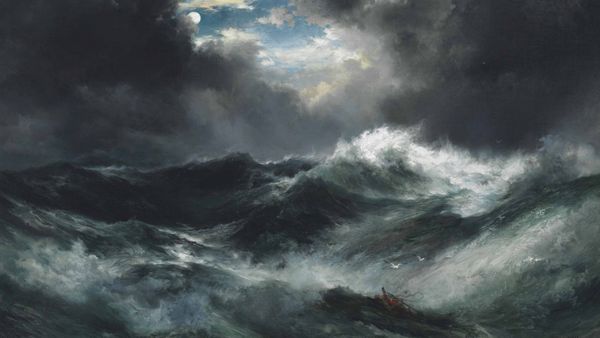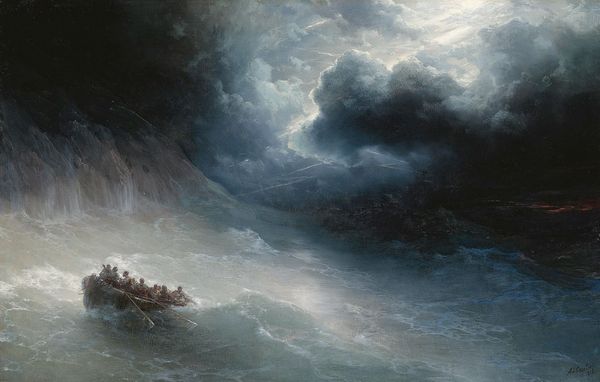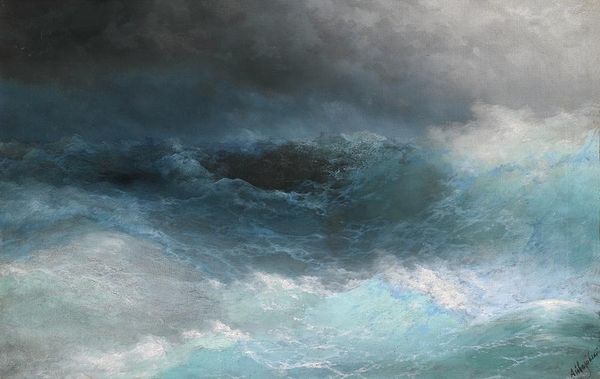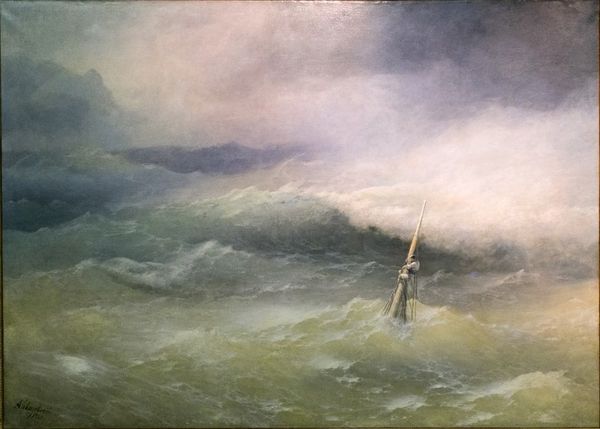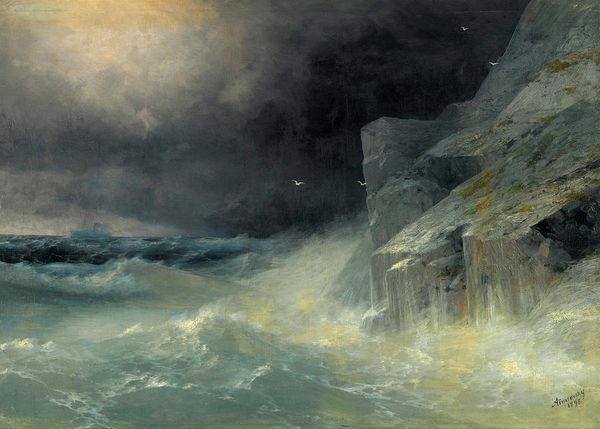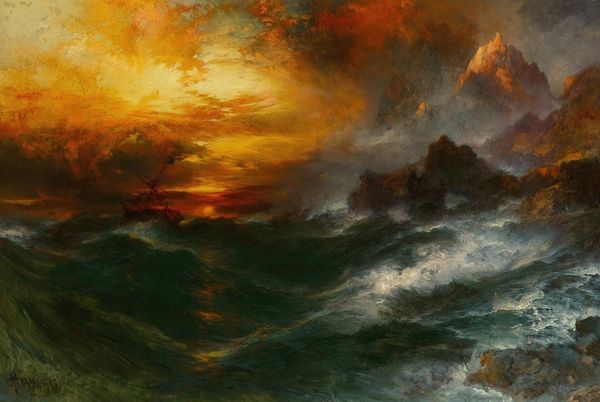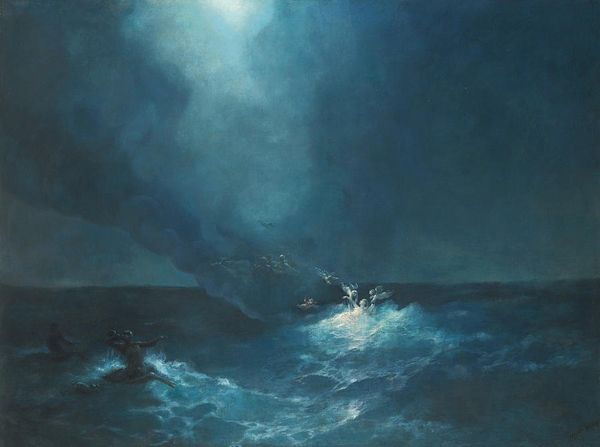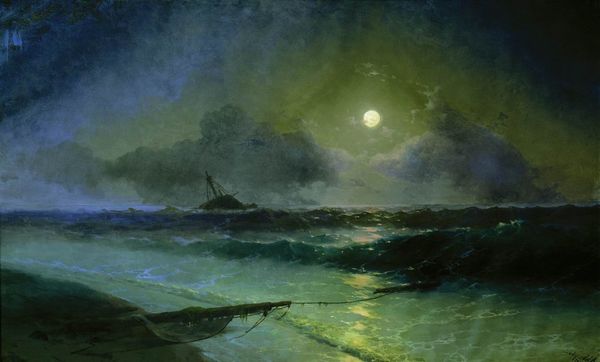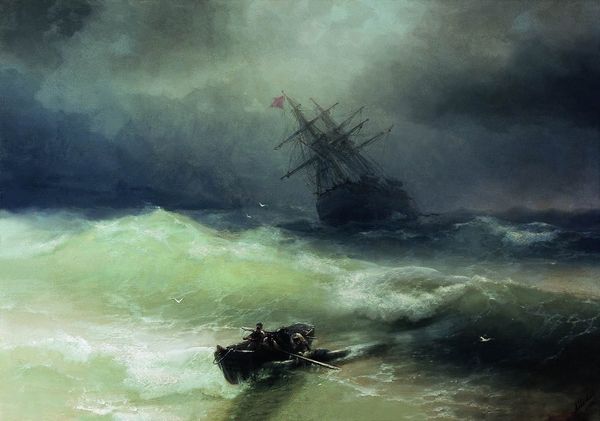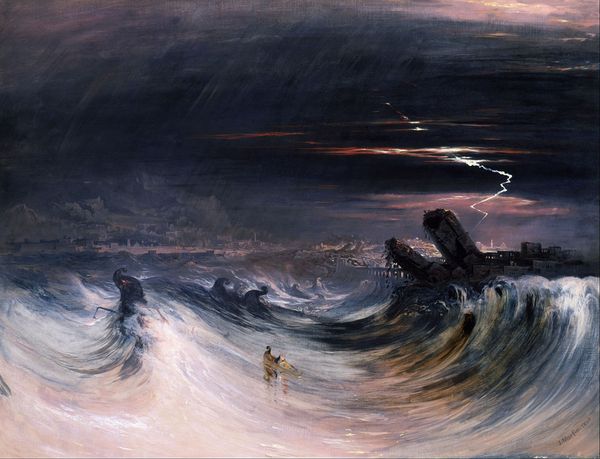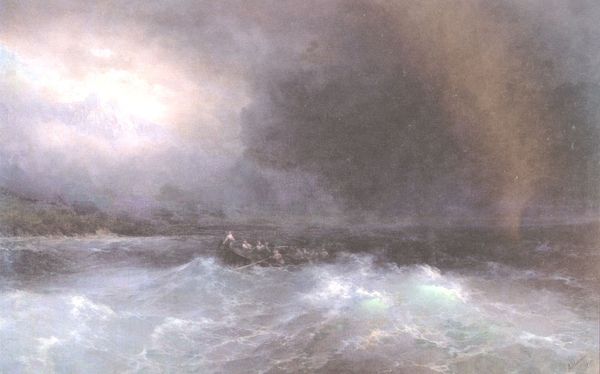
Copyright: Public domain
Editor: We’re looking at "The Wave," an 1889 oil painting by Ivan Aivazovsky. It's… overwhelming. The sheer force of the ocean depicted is incredibly intimidating. What do you see in this piece? Curator: I see a powerful testament to the Romantic era’s obsession with the sublime – that feeling of awe mixed with terror when confronted with nature’s immensity. The wave itself isn’t merely water; it's a symbol, perhaps of fate, or the overwhelming power of the unconscious. Editor: The figures clinging to the wreckage seem almost insignificant against that backdrop. Is that intentional, do you think? Curator: Absolutely. Aivazovsky understood the symbolic weight of scale. He diminishes humanity to emphasize nature's dominance, connecting with the longstanding idea of the sea as both a life-giver and a destroyer. Notice the contrast in light – hope flickers on the horizon, even amidst the chaos. Editor: So, even within the devastation, there's a glimmer of hope represented through light? Curator: Precisely. It's a recurring visual motif – the beacon that guides or the promise of rescue after suffering. How might this relate to Russian cultural memory and the experience of facing constant upheaval? Editor: That’s fascinating. I hadn’t considered the broader historical context and the symbolic role of light. Thanks! Curator: Indeed! Examining these artistic choices really uncovers layers of meaning and illuminates why such imagery endures in our collective imagination.
Comments
No comments
Be the first to comment and join the conversation on the ultimate creative platform.
